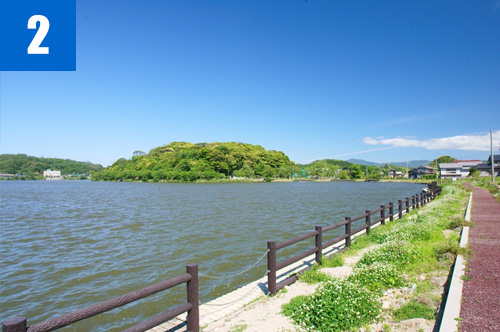The sand dunes, sand bar, and lagoons were formed by sand accumulated by the raising of the surface of the Sea of Japan and seasonal winds from the Sea of Japan. The river water accumulated sand and soil at the mouth of the river, forming the plain. On the plateau looking over the Sea of Japan is Amino Choshiyama Tumulus, which is touted as one of the three greatest tumuli in Japan. You can learn about how people have lived here since olden times.
(1)Kotohikihama Beach
Kotohikihama Beach is a 1.8-km-long beach known for its beautiful landscape of white squeaky sand and green pine trees. The sand on this beach actually consists of grains of quartz. The friction between the grains of sand makes the sand squeak. The beach is designated as a national natural asset as well as a Place of Scenic Beauty.
(2)Lake Hanare
An ancient bay was dammed up by the ancient and modern dunes, as well as a growing sandbar, and became a lagoon. This is the largest lake in the region, some 3.8 km in circumference and 7 meters in depth.
(3)Town landscape, Tango Chirimen textile, Amino Shrine
The climate of the Tango region is humid with heavy rainfall. This climate is suitable for the production of silk textile, which is vulnerable to dry weather. This is why silk textile has been produced in this region since olden times. On the precincts of Amino Shrine, which is a national registered cultural asset, there is Koori Shrine, which honors the god of textiles and silkworm culture. On the hill to the south of the town are the Amino Choshiyama tumuli.




